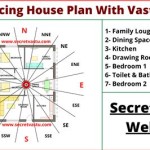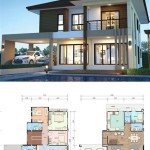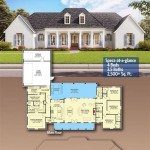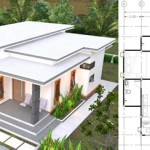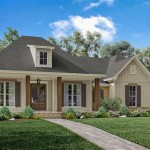Types of House Floor Plans
Understanding the various types of house floor plans is crucial when embarking on a home-building or buying journey. Different layouts cater to diverse lifestyles, family sizes, and personal preferences. This article explores common floor plan types, outlining their characteristics and potential advantages.
Open Floor Plans: Characterized by large, interconnected spaces, open floor plans minimize walls between the kitchen, dining, and living areas. This design fosters a sense of spaciousness and promotes interaction between family members. Natural light flows freely, enhancing the overall ambiance. Open floor plans are ideal for entertaining and accommodating large gatherings. However, they can present challenges in terms of noise control and privacy.
Closed Floor Plans: Traditional closed floor plans feature distinct, separate rooms for different functions. Walls clearly delineate spaces, offering greater privacy and noise reduction. This layout can be more suitable for individuals who prefer defined areas for specific activities, such as a dedicated home office or a quiet reading room. However, closed floor plans can feel less spacious and may limit natural light penetration.
Single-Story Floor Plans: These homes contain all living spaces on one level, eliminating the need for stairs. Single-story plans are particularly appealing to individuals with mobility challenges or families with young children. They offer easy accessibility and simplify daily living. However, single-story homes require a larger footprint, potentially increasing land costs and limiting yard space.
Multi-Story Floor Plans: Multi-story homes utilize vertical space, offering greater square footage within a smaller footprint. This layout can be more economical in areas with high land costs. Multi-story plans often separate living spaces from sleeping areas, providing enhanced privacy. However, stairs can pose accessibility challenges for some individuals.
Split-Level Floor Plans: Popular in the mid-20th century, split-level homes feature staggered levels connected by short flights of stairs. This design creates distinct zones within the home, often separating living areas, bedrooms, and basements. Split-level plans offer a sense of privacy and can be visually appealing. However, they may not be suitable for individuals with mobility concerns and can be less energy-efficient due to the multiple levels.
Ranch Floor Plans: Known for their single-story layout and low-pitched roofs, ranch homes offer a casual, comfortable living experience. They typically feature an attached garage and a sprawling layout. Ranch plans are well-suited for families with young children and offer easy accessibility. However, they require a larger footprint and may lack distinct separation between living and sleeping areas.
Bungalow Floor Plans: Bungalows are typically small, one or one-and-a-half story homes with a cozy, intimate feel. They often feature a front porch and a simple, practical layout. Bungalows are an affordable housing option and offer easy maintenance. However, they may lack storage space and can feel cramped for larger families.
Mediterranean Floor Plans: Inspired by the architecture of Mediterranean regions, these homes feature stucco exteriors, red tile roofs, and arched doorways. They often incorporate courtyards, balconies, and outdoor living spaces. Mediterranean plans offer a luxurious and elegant aesthetic. However, they can be expensive to build and maintain, and may not be suitable for all climates.
Craftsman Floor Plans: Characterized by handcrafted details, natural materials, and built-in features, craftsman homes exude warmth and character. They often include fireplaces, exposed beams, and front porches. Craftsman plans offer a timeless appeal and a focus on quality craftsmanship. However, they can be more expensive to build than some other styles.
Contemporary Floor Plans: Contemporary homes emphasize clean lines, geometric shapes, and open spaces. They often incorporate sustainable materials and energy-efficient features. Contemporary plans offer a modern and minimalist aesthetic. However, they may not appeal to individuals seeking a more traditional style.
Farmhouse Floor Plans: Inspired by traditional farmhouses, these homes feature large, open kitchens, wrap-around porches, and rustic details. They often incorporate reclaimed materials and a focus on comfortable living. Farmhouse plans offer a welcoming and nostalgic appeal. However, they can require significant upkeep and may not be suitable for all locations.
Victorian Floor Plans: Victorian homes are known for their ornate details, intricate woodwork, and bay windows. They often feature multiple stories and a grand, imposing presence. Victorian plans offer a historic and romantic aesthetic. However, they can be expensive to maintain and may not be energy-efficient.
Tudor Floor Plans: Tudor homes are characterized by steep roofs, prominent chimneys, and decorative half-timbering. They often feature multiple gables and a distinctive, medieval-inspired appearance. Tudor plans offer a unique and stately aesthetic. However, they can be complex to build and may not be suitable for all climates.
Choosing the right floor plan is a significant decision that requires careful consideration of individual needs and preferences. Understanding the characteristics of various floor plan types can help individuals make informed choices that align with their lifestyle and long-term goals.

The Diffe Types Of Floor Plans

30 Amazing Diffe Types Of House Plan Design Ideas Engineering Discoveries In 2024 Create Plans Home

30 Amazing Diffe Types Of House Plan Design Ideas Engineering Discoveries Layout Plans Budget

Importance Of House Floor Plans In Architectural Design

Functional House Plans For Diffe Types Of Houses Engineering Feed

House Floor Plans Real Estate Zambia Be Forward

Floor Plans Types Symbols Examples

Floor Plans Types Symbols Examples

Diffe Types Of Building Plans The Constructor

Previousnext Closestop Slideshow Item 27 Of 31 Projetos De Casas Simples Projectos Planta Casa Terrea

